Do craft beer geeks drink cider? Is there room for another geeky alcoholic beverage in this booming market? Paul Vander Heide thinks so. So does Tenth and Blake.
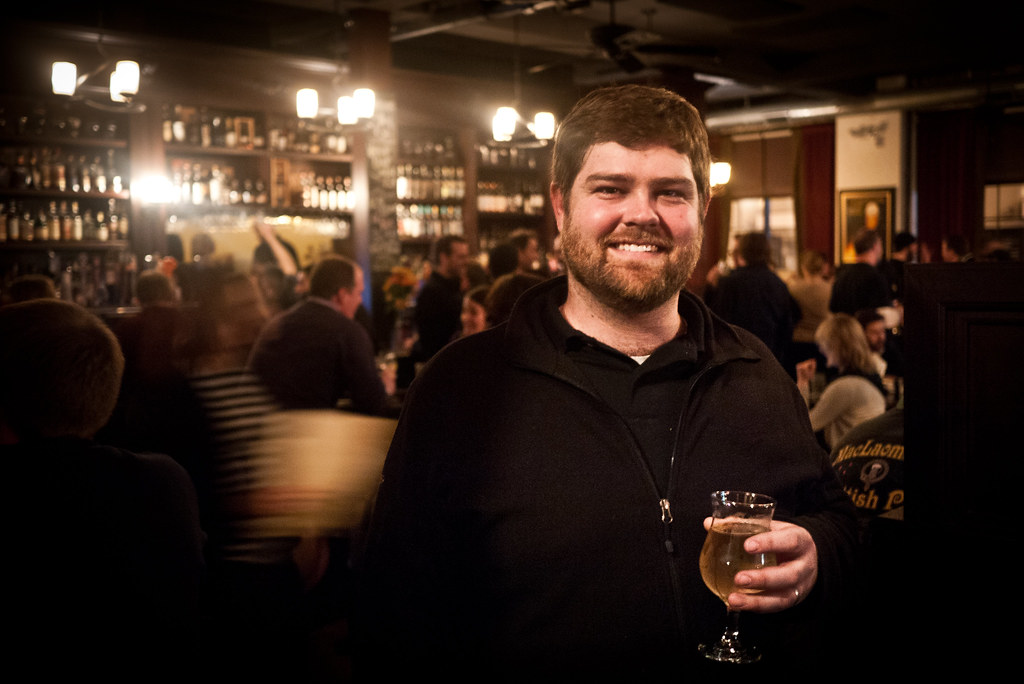
Paul and a few other cider makers (Original Sin, Fox Barrel and Crispin) got together to offer their flagship ciders and a few experimentals to a packed crowd at Fountainhead a few weeks ago. Since then I’ve seen Paul’s Vander Mill ciders showing up on craft beer menus all over town and he’s slated to do more tappings in Chicago.
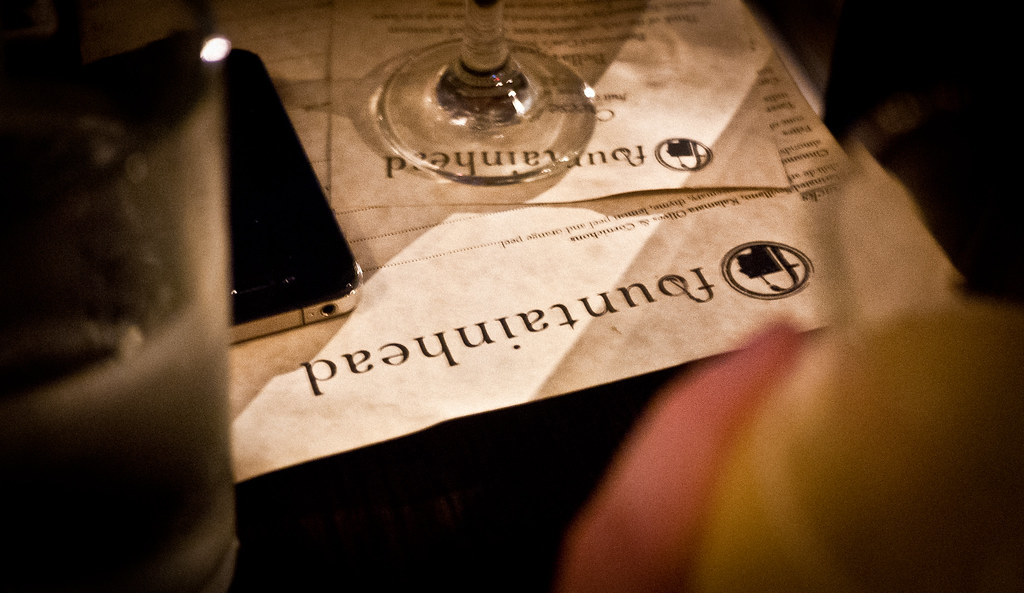
There’s definitely something happening here. But is it a rising-tide-raises-all-ships scenario or is there something deeper? “I think [the craft beer boon] has encouraged people to expand their willingness to try new products. In the end that really is a benefit to us all” says Paul. But cider has its own audiences too. Upon entering Fountainhead, Cleetus from City Provisions latched on to my arm and said “these cider guys are crazy geeky!” One sip in to Vander Mill’s Totally Roasted and I was convinced — 4lbs of homemade cinnamon roasted pecans in a 30 gallon batch, and a little vainilla to mellow it out, this cider had all the complexity of a Belgian with the sessionabiltiy of a summery white wine.

In other cidery news from that day, it was announced that Tenth and Blake acquired the popular Crispin cider company. While most cider geeks I talked to don’t consider Crispin a true craft cider (even questioning why they were there at all) they certainly have been driving a lot of volume in a niche space. Ciders from bigger brands like Crispin and Magners are typically made from a concentrate, or even worse, fermented glucose water, and then have the flavor added back in with juice. But craft ciders like Vander Mill and Original sin are made from a real presses cider and real fruits like pear, cherries and of course apples.
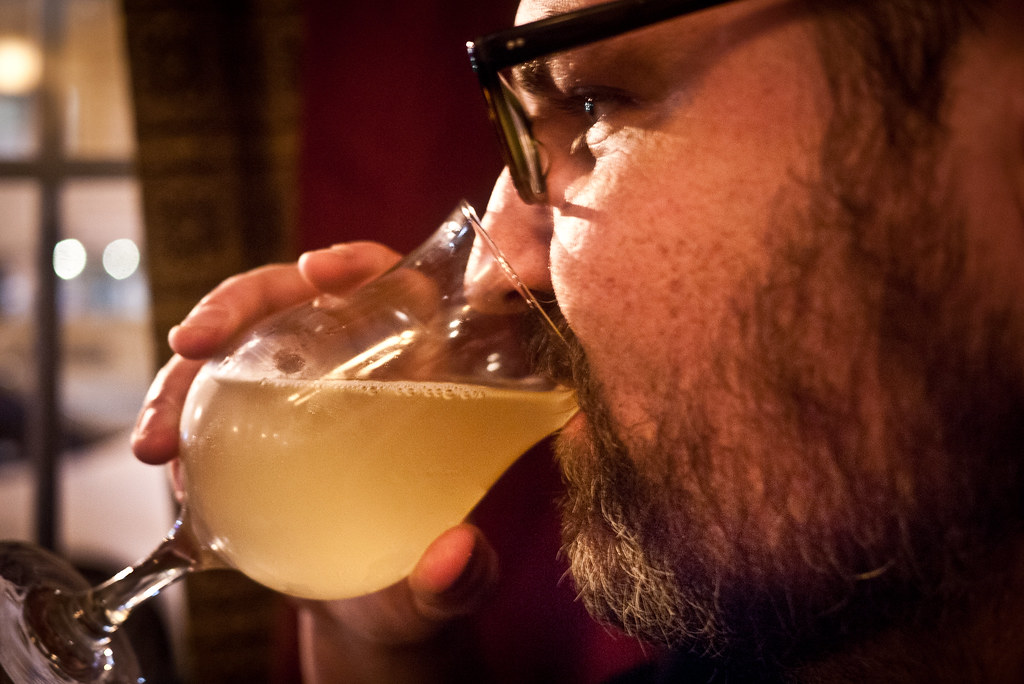
And like craft beer, experimentation is at the core of this new wave of cider making. Paul’s been using English ales yeasts for most of his ciders, but also calls on a Belgian ale yeast for his Michigan Wit cider, a recipe he claims he was making long before Woodchuck tried it. The difference between cider and beer geekery tend to be the major influence that farming has on cider makers. They take their fruit crops seriously and tend to grow their own, and cider is a natural extension of a farmer’s core business of growing and harvesting. Only recently have we seen an increase in brewers trying to grow their own hops and grain. Rogue bottles their Chatoe series First Growth Single Malt Ale and Good Chit Pilsner with ingredients from their own farm, and Capital Brewery in Wisconsin grows wheat on Washington Island for their Washington Island Wheat label. Now imagine that every brewer grew their own ingredients and you can imagine what the cider culture really geeks out over.
Cider mills aren’t beholden to the three-tier distribution system. This makes it possible for cider makers like Paul to start distributing their product directly, to a point. For awhile, starting in 2006, Paul was driving his own van from his mill in Spring Lake, Michigan to a variety of locations around SW Michigan and Chicago. But this became unsustainable with the volume that was being demanded. Eventually the distribution system made sense for his business, so he signed on with Windy City. It was a great story about organic, hands-on growth that uses a regulated system when it starts to make sense for the business — not the other way around.
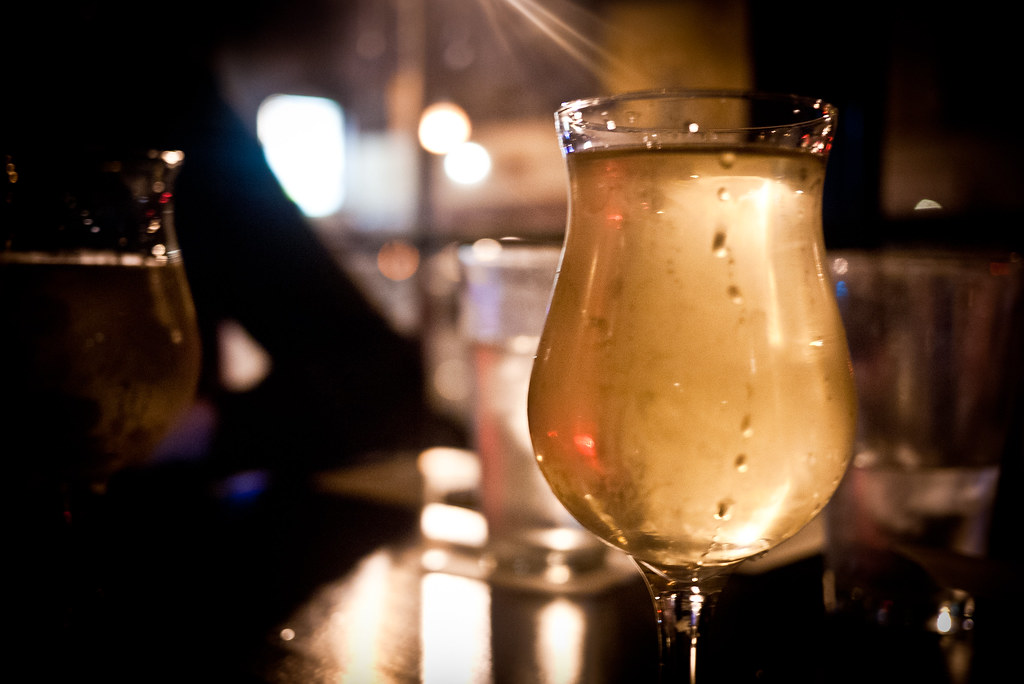
What started out as an additional way to monetize Paul’s main product, apples, cider has quickly become over 50% of his revenue. He’s even starting to brew his own beer now, served as part of traditional cider drinks like snake bites and black and tans. Right now he’s making a Belgian called Chapman’s Golden Strong with 20% cider. I recently had some of this at the Winter Beer Festival and was impressed with its crisp, full golden flavor.
Paul also has plans to collaborate with other folks in the craft beer scene. Earlier that day, he stopped in at City Provisions to help educate the staff on the cidering process and did tastings so they can better recommend certain ciders to customers. But there’s other plans here too:
We are going to do a collaborative cider with Cleetus and release it this fall. It will most likely be a “cyser” which is cider fermented with honey. We will be using honey from Cleetus’ bee hives for the product. It may also have some other spice element to it as well. Or we will possibly barrel age it over the summer.
Paul’s a great ambassador for cider. He was bouncing around the bar all night, ordering people drinks and christening new cider geeks with every handshake. The Crispin guys, on the other hand, didn’t seem to have it in them. Whether news of the acquisition was bittersweet, or they were simply jet-lagged, the energy was clearly sucked out of them.
Perhaps taking the award for geekiest however was Original Sin’s founder, Gidon Coll. Knife in hand, he began pouring from bombers of his exceptional ciders at the bar, slicing heirloom apples he brought with him from New York, and telling the history of the Newtown Pippin in the style of Funny or Die’s Drunk History series. Want to geek out for a second? Here you go:
This variety originated as a chance seedling (a “pippin”) on the Gershom Moore estate in the village of Newtown (now called Elmhurst; the Moore property stood in the vicinity of what is now Broadway and 45th Avenue) in Queens County on Long Island, New York in the early 18th century. It was widely grown and praised in colonial America. Thomas Jefferson, for example, wrote from Paris that “they have no apples here to compare with our Newtown Pippin.”
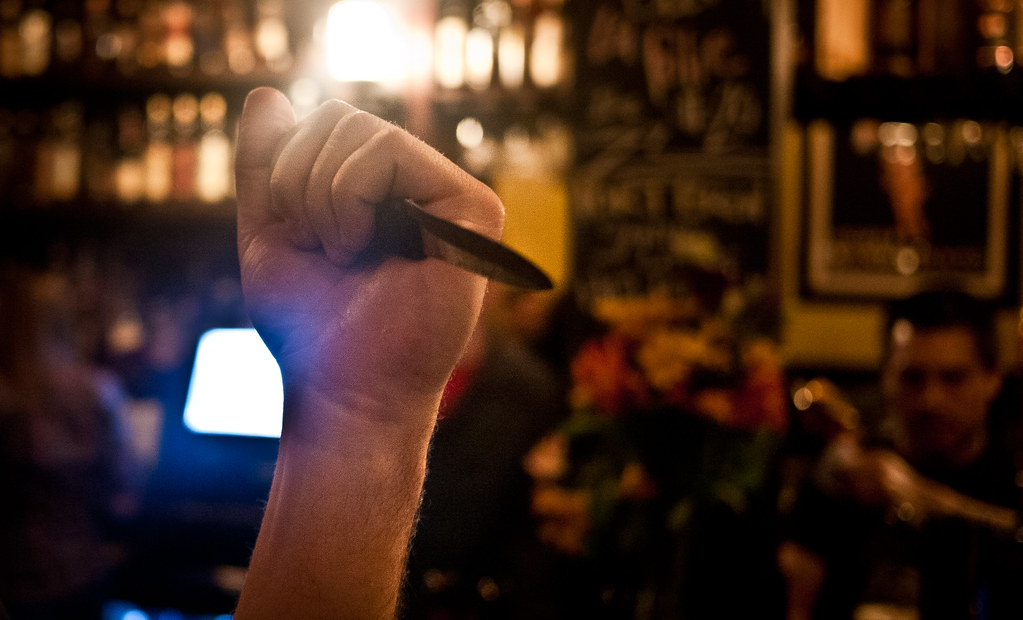
This was a spectacular evening for expanding my fermented horizons. Some upcoming cider-related opportunities include Paul’s yearly celebration at Vander Mill the first week of October. For Vanderfest, Paul invites cider makers and local micro and craft brewers to participate, using a fresh batch of his cider in their experimental offering (Paul gives them 50 gallons to toy with). Last year he got takers from new Holland, Brewery Vivant and Hopcat among others.
A bit sooner rather than later if you’re thirsty is another Vander Mill tapping at Bangers and Lace next week. And if you see Paul there, (he’ll be on-site Thursday night) tell him Good Beer Hunting sent you and try to get your hands on a Totally Roasted. Beg him if you have to.
 Michael Kiser
Michael Kiser







